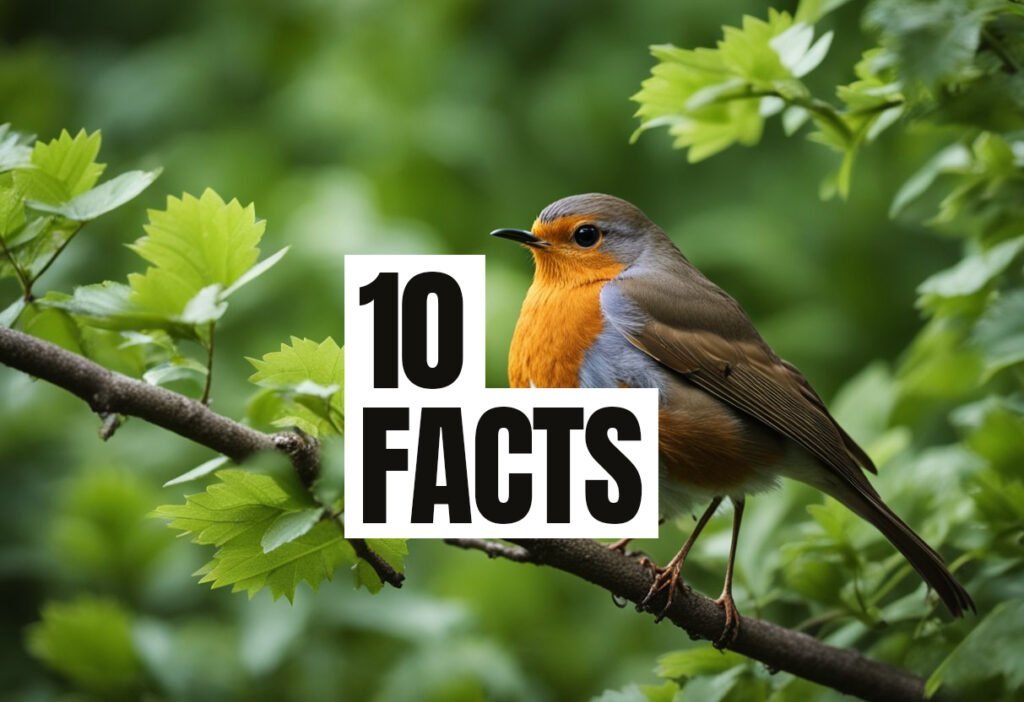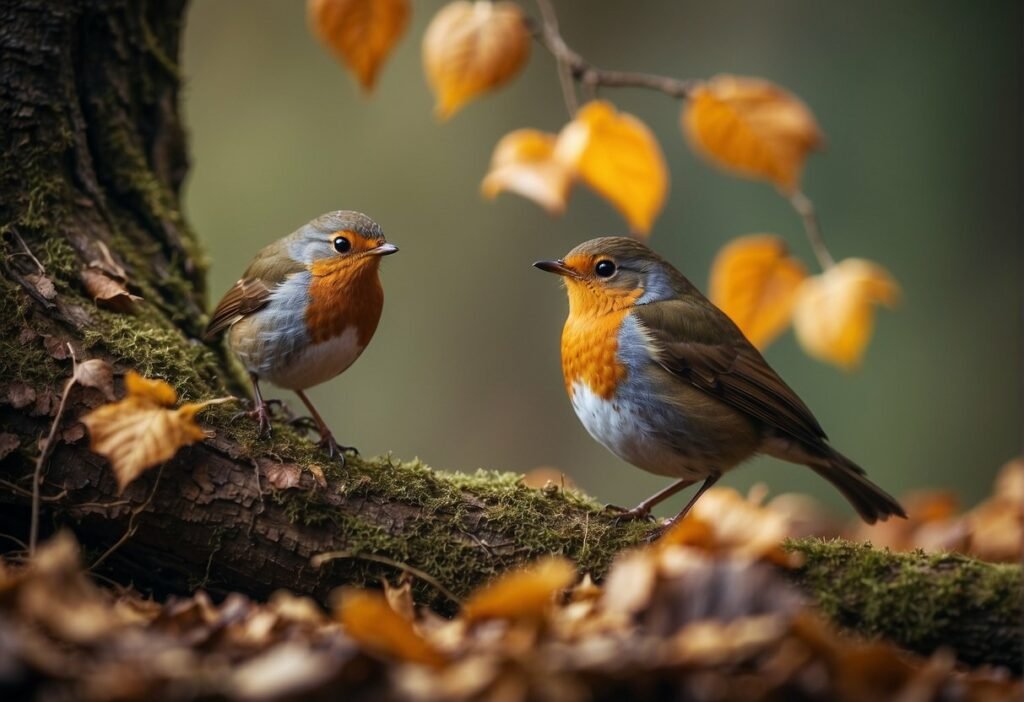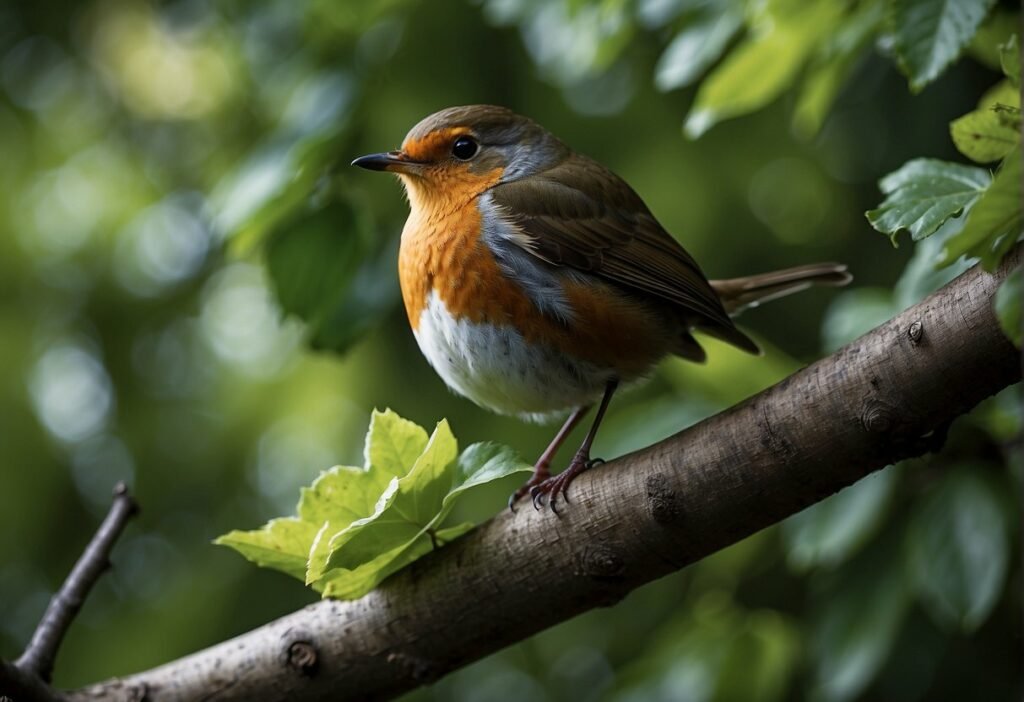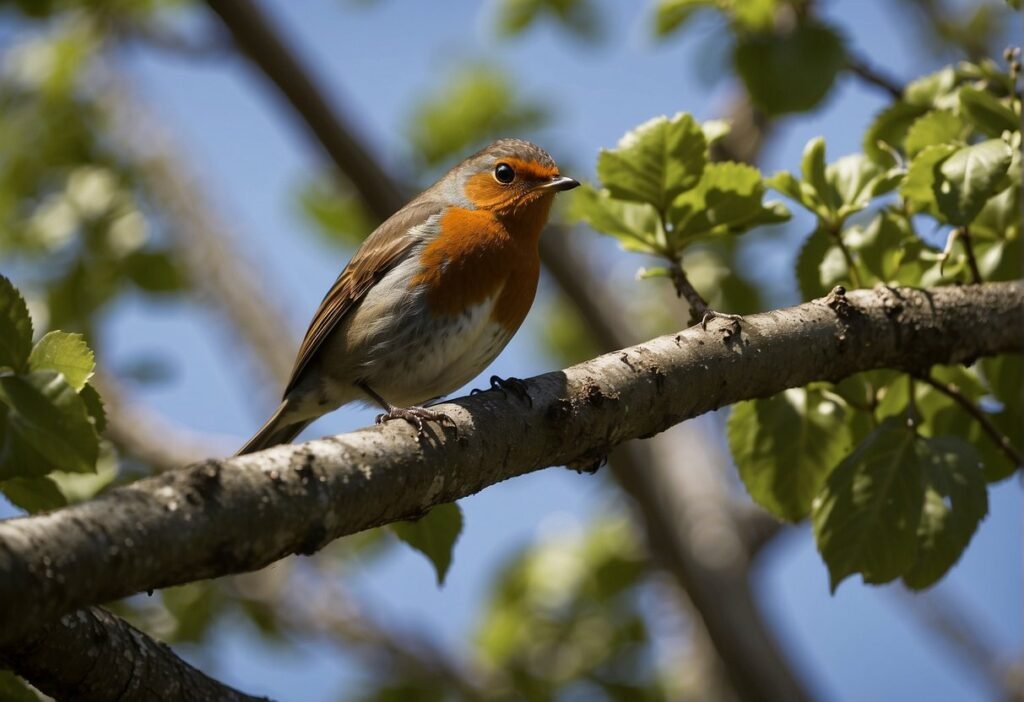Robins are a common sight in many parts of the world, including the United States. These birds are known for their distinctive red breast and melodious song. But what is the habitat of robins, and where can they be found in North America?

The American Robin, also known by its scientific name Turdus migratorius, is a migratory bird that can be found throughout North America. In the summer months, robins can be found in Canada and the northern United States. As the weather gets colder, they migrate south, with some robins traveling as far as Mexico and Central America.
Robins are adaptable birds that can thrive in a variety of habitats, including forests, woodlands, and suburban areas. They are known for building their nests in trees, shrubs, and other elevated locations. Robins are also attracted to areas with open lawns and gardens, which provide them with ample opportunities to forage for food. Overall, the habitat of robins is quite diverse, and these birds can be found in a wide range of environments throughout North America.
Habitat and Distribution
Robins are a common bird species found throughout North America, including Canada, Alaska, Mexico, and Cuba. They are also found in Europe, where they are known as European robins.
| Habitat Type | Location | Plant Types | Water Sources | Predators | Temperature Range |
|---|---|---|---|---|---|
| Forests | Worldwide | Trees, shrubs, underbrush | Streams, ponds | Hawks, cats, snakes | -5°C to 30°C (23°F to 86°F) |
| Urban Areas | Cities, suburbs | Gardens, parks, lawns | Bird baths, fountains | Domestic animals, birds of prey | -10°C to 35°C (14°F to 95°F) |
| Wetlands | Near water bodies | Marsh vegetation | Lakes, rivers | Raccoons, foxes | 0°C to 25°C (32°F to 77°F) |
| Meadows | Rural, open areas | Grasses, wildflowers | Creeks, small ponds | Foxes, large birds | 5°C to 30°C (41°F to 86°F) |
| Agricultural Areas | Countryside | Crops, grasslands | Irrigation channels | Rodents, birds of prey | -3°C to 28°C (26.6°F to 82.4°F) |
| Wooded Edges | Forest outskirts | Mixed vegetation | Natural water bodies | Snakes, larger birds | -5°C to 27°C (23°F to 80.6°F) |
Regional Habitats
Robins are adaptable birds that can thrive in a variety of habitats, including woodlands, grasslands, parks, and backyards. They are most commonly found in open areas with scattered trees and shrubs, where they can easily find food and build nests. In urban environments, robins can be found in both residential and commercial areas, including suburban neighborhoods and city parks.
Urban vs. Rural Environments
While robins are adaptable to both urban and rural environments, they tend to prefer urban areas with more trees and shrubs. In rural areas, robins are more commonly found in fields and meadows, where they can forage for insects and other small prey.
Nesting and Breeding Areas
Robins typically build their nests in trees and shrubs, using a combination of mud, twigs, and grasses. They often choose locations that are well-hidden and protected from predators. During breeding season, robins can be found in large numbers in their nesting areas, where they engage in courtship displays and territorial behavior.
Overall, the habitat and distribution of robins is diverse and adaptable, making them a common sight in many different environments.
Diet and Foraging Behavior
Robins are omnivores, which means they eat both plants and animals. Their diet varies depending on the season and availability of food. In general, robins eat a variety of insects, worms, and fruits.
Feeding Habits
Robins are known for their distinctive foraging behavior. They hop along the ground and use their sharp eyesight to spot prey. When they find food, they use their bills to probe and pull it out of the ground or off of plants. They are also known to catch insects in mid-air.
Robins are particularly fond of earthworms, which make up a large part of their diet. They use their sense of hearing to locate worms underground and then use their bills to pull them to the surface. Robins are also known to eat mealworms, which are commonly used as bird food.
Seasonal Diet Variations
During the summer months, robins eat a lot of insects, such as beetles, caterpillars, and grasshoppers. They also eat a variety of fruits, including cherries, blueberries, and raspberries. In the fall and winter, when insects are less abundant, robins rely more heavily on fruits and berries.
Overall, robins are adaptable birds that can survive on a variety of foods. Their diet and foraging behavior make them an important part of many ecosystems.
Frequently Asked Questions
What environments do American robins typically inhabit?
American robins are found throughout North America, from Alaska to Mexico. These birds are adaptable and can be found in a variety of habitats, including forests, woodlands, parks, and gardens. They also inhabit suburban and urban areas, where they can often be seen hopping across lawns and searching for food.
Can you explain the preferred living conditions for robins?
Robins prefer habitats with open spaces and plenty of trees or shrubs for nesting and perching. They also prefer areas with a reliable source of water, such as a stream or pond. In addition, robins prefer areas with a mix of open ground and vegetation, as this provides them with a variety of food sources.
What are the common predators of the American robin?
The American robin has several natural predators, including hawks, owls, snakes, and domestic cats. Eggs and young are particularly vulnerable to predation, and many nests are destroyed by predators each year.
How long do American robins live on average?
The average lifespan of an American robin is around 2 years, although some individuals have been known to live up to 14 years. Many factors can affect the lifespan of a robin, including predation, disease, and habitat quality.
What diet sustains American robins in the wild?
American robins are omnivores and eat a variety of foods, including insects, worms, fruits, and berries. They are known for their distinctive habit of pulling earthworms out of the ground, but they also feed on a variety of other invertebrates.
What nesting habits are unique to the robin species?
Robins build cup-shaped nests out of grass, twigs, and mud. They typically lay 3-5 eggs per clutch and may have 2-3 clutches per breeding season. Both males and females help to incubate the eggs and care for the young. Robins are known for their aggressive defense of their nests and will often attack predators or other birds that come too close.




